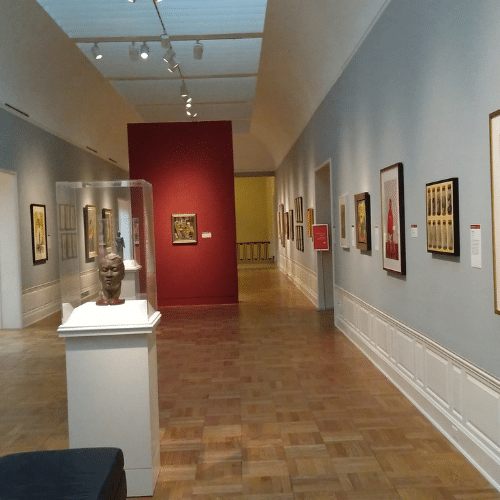
04 Mar Non-Invasive Pest Strategies for Museums
Preserving History and Aesthetics with Pest Control
In addition to the preservation of artifacts, museums also play a crucial role in educating the public. Each item on display tells a unique story, contributing to our understanding of history and culture.
Therefore, the implementation of effective pest control measures is not only about protecting the physical integrity of these items but also about ensuring the continuity of this educational mission.
Moreover, the aesthetic appeal of museums is fundamental to attracting visitors. Pests can cause visible damage that detracts from the beauty of exhibits, leading to a decline in visitor numbers.
Hence, non-invasive pest control is essential in maintaining the overall appeal of museums, ensuring they remain vibrant centers of learning and inspiration.
Museums’ Unique Pest Control Needs
The variety of materials found in museums adds to the complexity of pest control. Artifacts made from organic materials like wood, paper, and textiles are particularly susceptible to pest damage.
Understanding the specific vulnerabilities of each material is crucial in developing an effective pest management strategy.
Furthermore, many museums are housed in historic buildings, which can present additional challenges for pest control. These structures may have hidden crevices and old ventilation systems that provide ideal habitats for pests.
Tailoring pest control strategies to accommodate the unique architectural features of these buildings is essential for effective protection.
Safeguarding Museum Artifacts from Pests
The damage caused by pests in museums can be irreversible. For example, booklice feed on the glue in book bindings, leading to the deterioration of rare books. Similarly, moths can cause irreparable damage to historic textiles, eroding the fabric and fading colors.
Preventative measures, such as the use of archival-quality storage materials, can help protect sensitive items from pest infestations. Acid-free boxes and UV-filtering glass can provide an additional layer of defense, preserving the integrity of artifacts for future generations.
In addition to these measures, controlling the museum environment is crucial. Maintaining stable temperature and humidity levels can deter pests and prevent damage to artifacts. Regular environmental monitoring ensures that any fluctuations are quickly addressed, further safeguarding the museum’s precious collections.
Non-Invasive Pest Control Strategies
Cultural control is another aspect of non-invasive pest management. This involves modifying the museum environment to make it less conducive to pests. For instance, reducing clutter and regularly cleaning display cases can eliminate potential hiding spots for pests.
Biological control, using natural predators or parasites to manage pest populations, is also gaining popularity in museums. For example, introducing certain species of mites can help control booklice populations without the use of chemicals, preserving the delicate balance of the museum ecosystem.
Furthermore, educating museum staff and visitors about pest prevention is essential. Staff training on proper artifact handling and storage can reduce the risk of infestations. Visitor guidelines, such as not bringing food or drink into exhibit areas, can also help maintain a pest-free environment.
Modern Museum Pest Management
The use of pheromone traps is a common practice in museums like the Louvre in Paris. These traps lure specific pests, such as clothes moths, without harming the artifacts or the environment. The data collected from these traps helps museum staff monitor pest activity and adjust their strategies accordingly.
In the Smithsonian Institution, a comprehensive pest database is maintained to track and analyze pest activity across its various museums. This database allows for the sharing of information and best practices, fostering a collaborative approach to pest management in the museum community.
Additionally, the use of technology in pest monitoring is becoming increasingly important. Advanced sensors and cameras can provide real-time data on pest activity, allowing for quick responses. This technology can also help identify patterns and trends in pest behavior, leading to more effective and targeted pest control strategies.
Strengthening Museum Defenses
When selecting a pest control service, it’s important to consider their experience with cultural institutions. A company that has worked with libraries, archives, or other museums will have a better understanding of the unique requirements of these environments.
Regular training sessions for museum staff conducted by pest control professionals can be invaluable. These sessions can cover topics such as the identification of pests, proper cleaning techniques, and the safe handling of artifacts, empowering staff to be proactive in the fight against pests.
Transparency and communication between the museum and the pest control service are also crucial. Regular updates and reports from the pest control provider can help museum staff stay informed about the status of their pest management program. This open line of communication ensures that any concerns or new developments are addressed promptly, maintaining the effectiveness of the pest control strategy.
Conclusion
In conclusion, the role of pest control in museums extends beyond the mere protection of artifacts. It is integral to preserving the educational value and aesthetic appeal of these institutions. Non-invasive pest control measures are particularly vital, ensuring that the methods employed do not compromise the integrity of the artifacts or the environment.
The complexities of pest management in museums necessitate a tailored approach. This involves not only addressing the specific vulnerabilities of different materials and the unique challenges of historic buildings but also embracing modern technologies and strategies. Collaboration with experienced pest control professionals and ongoing staff education are key components of a successful pest management program.
Ultimately, the goal is to maintain museums as vibrant centers of learning and inspiration, free from the detrimental effects of pests. By prioritizing non-invasive pest control measures and fostering a proactive and informed approach to pest management, museums can continue to safeguard our cultural heritage for future generations.


No Comments